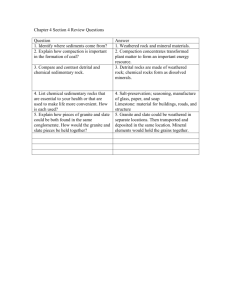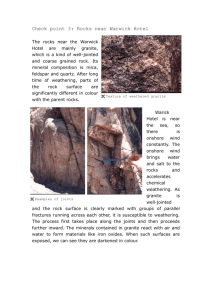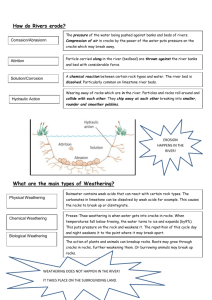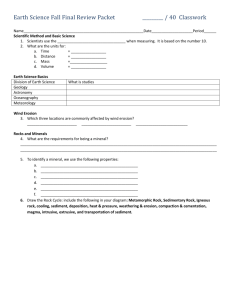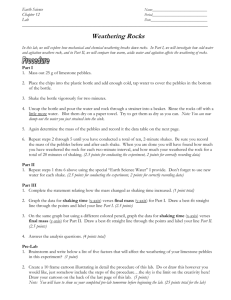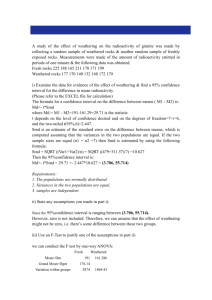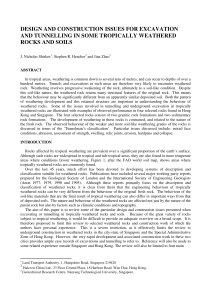Weathering Lab Write-up
advertisement
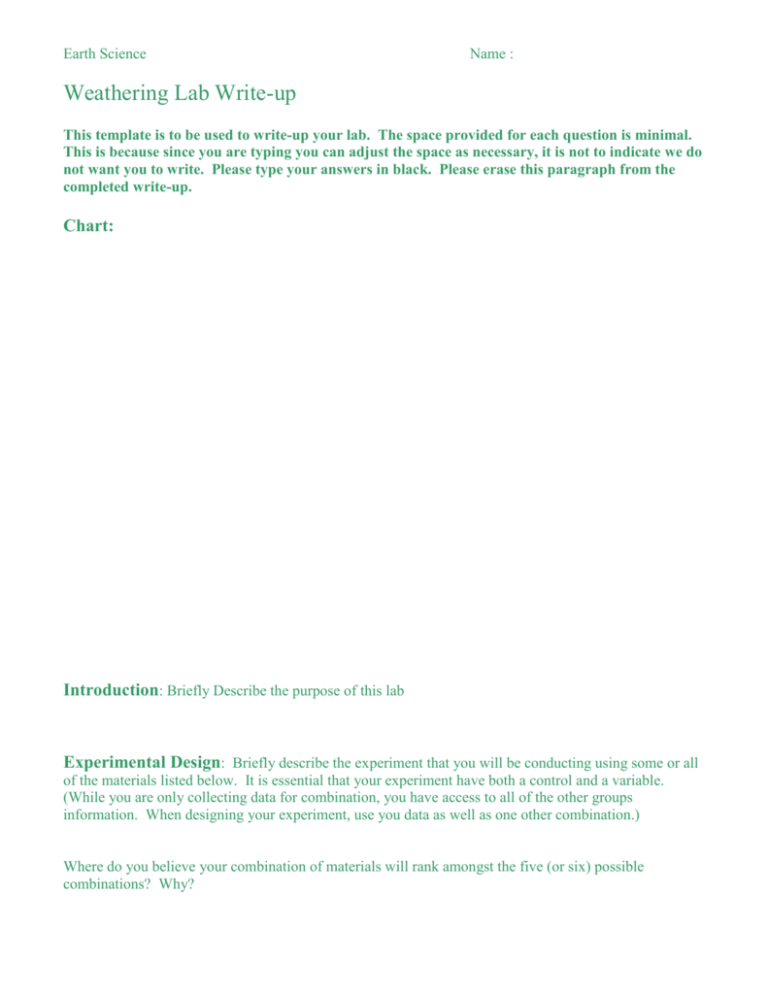
Earth Science Name : Weathering Lab Write-up This template is to be used to write-up your lab. The space provided for each question is minimal. This is because since you are typing you can adjust the space as necessary, it is not to indicate we do not want you to write. Please type your answers in black. Please erase this paragraph from the completed write-up. Chart: Introduction: Briefly Describe the purpose of this lab Experimental Design: Briefly describe the experiment that you will be conducting using some or all of the materials listed below. It is essential that your experiment have both a control and a variable. (While you are only collecting data for combination, you have access to all of the other groups information. When designing your experiment, use you data as well as one other combination.) Where do you believe your combination of materials will rank amongst the five (or six) possible combinations? Why? Materials: Water (warm or cold) Mild Acid Solution Marble Chips Granite Chips Plastic Shaking Bottles Balances Strainer Paper Towels Procedure: 1. Take between 90-100 g of marble chips (do not take more than 100 g). Determine the exact mass of your sample of rocks and record it in your data table. 2. Place your rocks in a shaking bottle and fill the bottle half way with water. Place the top on the bottle and shake the rocks vigorously for three minutes. 3. After shaking the rocks for three minutes, empty the rocks and water into a strainer. Shake the rocks in a strainer for a minute to get rid of any excess water. Then place your rocks on a paper towel to dry them further. (It’s important to try and dry the rocks as well as possible!) 4. After drying your rocks take their mass and record the mass on your data table next to the three minutes time. 5. Repeat steps 2-4 until you have weathered the rocks a total of 12 minutes. 6. When you have weathered one rock sample for 15 minutes, repeat the procedure on a second and then a third rock sample. 7. Make a graph of weathering time versus mass remaining (weathering time should be on the xaxis). Make two lines, each representing a different sample, and please make each a different color. Data Table: Your Combination: ___________________________________ WEATHERING TIME (min) 0 3 6 9 12 15 Five Different Combinations: 1. 2. 3. 4. 5. Limestone and Acid Limestone and cold water Limestone and warm water Granite and cold water Granite and warm water MASS REMAINING (g) 6. (might do granite and acid if there are enough groups) Conclusions: 1. Which of the above five combinations weathered the most? 2. Describe which types of weathering is took place with your combination. 3. During which time interval did the rocks weather the most? How do you account for this result? 4. Which of the two types of rock is hardest? Why do you believe this? 5. What is the relationship between the length of time that a rock has weathered and the rate of weathering? (The longer it weathers ……..) 6. From your experiment, what did you learn about how the conditions a rock is exposed to affects the rate at which it weathers? 7. Were any of the results recorded on the chart different that you expected or not really make sense? Which results? How do you account for this?
